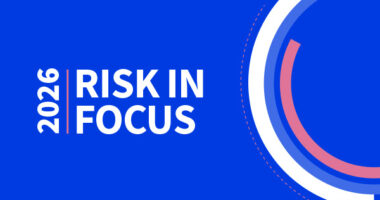In this article we are sharing two case studies from different industries, which can be used as a guidance or serve as a source of inspiration for future internal audits in your company.
Introduction
Sustainability has been high on the agenda for some years now, with only increasing focus going forward. However, for many internal auditors it is still not clear how to cover this area in form of audits.
Company background and context related to sustainability
CASE 1: Equinor
Equinor supports the Paris Agreement and a net-zero future. The CO₂ emissions in the oil and gas production have already been brought down to industry leading levels, and work to reduce further is ongoing. The journey to develop as a broad energy company is founded on a strong commitment to sustainability, and Equinor’s strategy – always safe, high value and low carbon – is applied in everything the company does. The annual sustainability report offers an overview of how the company is working on the most material sustainability impacts.
More information about Equinor’s work and reporting on sustainability can be found at Sustainability – equinor.com
CASE 2: Orkla
Orkla’s efforts within sustainability, both on Group and individual Business Unit (BU) level, are highly recognized by relevant organizations and industry experts. There has been a development of the area throughout the last two decades, accelerating in the recent years. It started from the first Group guidelines for corporate responsibility established in 2004, followed by a number of Group-wide policies and standards within food safety, EHS, human rights, sustainable sourcing etc. A separate sustainability function was established in 2009, that has focused on developing Orkla’s sustainability goals, strategy, and future aspirations. Aspirations towards 2025 were built upon selected UN Sustainable Development Goals and structured around the five pillars:
1. Nutrition and wellness
2. Safe products
3. Sustainable sourcing
4. Environmental engagement
5. Care for people and society
Each pillar has its sub-goals, with specific KPIs.
More information about Orkla’s work and reporting on sustainability can be found at www.orkla.com/sustainability/
Risk assessment
CASE 1: Equinor
The risk in focus for the specific audit discussed here is errors in the sustainability reporting that may lead to reputational consequences. There are also financial risks that are related to lack of transparency on climate-related issues and fraud with regard to regulatory environmental reporting.
CASE 2: Orkla
When approaching auditing sustainability in Orkla, Internal Audit (IA) identified key risks as Orkla’s capability to achieve externally communicated goals and ambitions towards 2025 and create profitable growth through sustainability related activities. Potential impact of COVID-19 pandemic on slowing down the progress due to shifted priorities was included, as well as upside risk in form of useful experiences that can be utilized constructively in post-pandemic sustainability work.
Purpose, scope and methodology
CASE 1: Equinor
For Equinor Corporate Audit, various areas of sustainability have been covered by audits over the past years such as water management, incident/accident classification and reporting, fraud prevention measures and human rights. There are growing demands to the oil & gas industry related to sustainability and reporting.
The objective of the audit was to review and assess the effectiveness of the internal control environment and assurance/monitoring activities related to the sustainability report. The relevant risk register, internal governing documents and processes were included in the audit review. The external auditor also has a role in sustainability reporting and the scope of the internal audit was coordinated with them. There were also performed benchmark with industry peers to measure Equinor’s maturity in sustainability reporting.
Both manual and automated processes, internal controls and tools were included in the audit scope.
There were a high number of data points that added to the complexity to the sustainability report and the audit.
CASE 2: Orkla
The purpose of the audit was to provide an independent and objective evaluation of the progress towards Orkla sustainability goals and aspirations 2025, as well as robustness of existing governance, risk management, strategy, business plans, reporting and KPIs/incentives.
The audit was conducted on Group, Business Area (BA), and BU level, and included interviews and process walkthroughs with relevant employees from the BU sustainability network, representatives from BA management and Group functions, along with document and data analysis. Interview guides were anchored with Sustainability Director, who also was the main point of contact and support during the audit process. All conducted interviews and result from document and data analysis were analyzed for repeating topics, which were subsequently aggregated and presented in IA observations. IA independently assessed each observation, focusing on improvement potential. All sections were validated for accuracy by the responsible person/department, and management comments were provided.
Outcome
CASE 1: Equinor
The audit report focused on areas for improving internal control efficiency including proposal to adjust assurance activities according to the underlying risks. Management had performed review and sign-off of own areas of responsibility. However, the process was proposed to be further formalized with required statements from business areas and corporate functions management addressing the status of internal control and its effectiveness related to sustainability reporting within their areas of responsibility.
CASE 2: Orkla
Final audit report was structured around the areas with identified improvement potential, according to the scope outlined above. Closing meetings were conducted, and management committed to further strengthening sustainability work in Orkla.
______________________________________________
You might also be interested in learning more about: A practical guide for boards and leadership teams on sustainability




